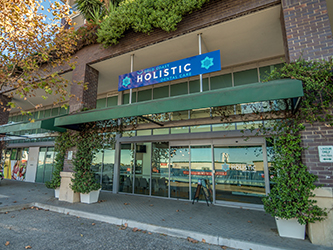How Does Cupping Work? (How the Magic Happens)
From a modern medical perspective, scientists are exploring several mechanisms for why cupping may benefit the body. Key theories include:
Improved local circulation: Suction draws blood to the surface, dilating vessels and improving micro-circulation and nutrient transport.
Neurological reflexes / pain-gate theory: The mechanical stimulus may activate neurological pathways that modulate pain response.
Release of fascial-muscular tension & adhesions: The upward pull helps loosen tight tissue and can improve mobility.
Inflammation-immune modulation: Cupping may help reduce local inflammation, promote detoxification of stagnated fluid, and support immune activity.
“Stagnation removal” in TCM terms: In TCM language, stagnated qi and blood cause pain and illness; cupping is used to restore the flow.
While research continues and many trials still show methodological limitations, the evidence is increasingly supportive. For example, a large systematic review found that cupping therapy may be effective for chronic musculoskeletal pain.
Key Benefits of Chinese Cupping
Here are some of the most common benefits our patients report, and which research supports, with cupping therapy:
Many people use cupping for back pain, neck stiffness, shoulder tension, and muscular tightness. A pilot study on sub-acute or chronic low back pain found significant reductions in pain and improved range of motion after cupping sessions.
This makes cupping especially relevant for patients at our clinic who may suffer from jaw, neck or shoulder tension (for instance alongside TMJ issues or head/neck-related dental stress).
By stimulating blood flow and drawing fluid to the surface, cupping can help with lymphatic drainage and elimination of metabolic waste. This can support overall wellness, tissue repair and recovery.
Because cupping induces a relaxation response (similar in effect to a deep tissue massage but with a unique suction effect), many experience reduced stress, improved sleep and calm. Some evidence suggests psychological benefits including lower anxiety scores.
4. Supporting Recovery & Mobility
Athletes and active people often use cupping to aid recovery from training, improve mobility, and treat over-use or repetitive strain conditions. Studies indicate it may enhance recovery protocols when combined with other therapies.
5. Holistic Health Applications
Beyond muscles and joints, cupping has been used (in TCM) for respiratory congestion, digestive stagnation, headaches/migraines, and more. While less high-quality evidence exists for some of these uses, they remain part of the holistic conversation.
How We Use Cupping at Gold Coast Holistic Dental Care
At our Carrara clinic, cupping is integrated into our broader wellness services, because we recognise that oral health and whole-body health are interconnected.
For example:
A patient coming in with TMJ pain, neck tension and disrupted sleep may benefit from a cupping session focussed on the upper neck/shoulder/back region, complementing osteopathy, myofunctional therapy and dental evaluation.
After a major dental treatment (such as amalgam removal or airway assessment), cupping may support circulation and aid soothing of residual muscular tension from operating chairs, clenching or bruxism.
For clients looking to proactively support healing or enhance athletic recovery (training on the Gold Coast, for instance), cupping is offered as part of our “Wellness & Preventive Therapies” suite alongside massage, naturopathy and infrared sauna.
Because cupping is a gentle, non-invasive therapy, it fits beautifully with our ethos of biocompatible, integrative care. Our practitioners ensure the cups are applied appropriately, for the correct duration and suction level, and we customise treatment to the individual.
Is Chinese Cupping Right for You?
While cupping is generally safe when delivered by trained professionals, it’s important to recognise some considerations:
Suitability
Healthy adults with muscular tension, stress-related stiffness, recovery needs or pain conditions often benefit.
At the clinic level, we assess whole-body suitability and look at relevant oral/neuromuscular connections (for instance with jaw clenching, poor posture, airway issues).
Cautions
Wet cupping (which involves superficial skin incisions) carries higher risk of infection and requires sterile technique.
Avoid cupping over open wounds, deep vein thrombosis, varicose veins, acute infections, skin lesions, pacemakers or severe medical conditions.
Pregnant people, children, older adults, or those on anti-coagulants may require special care.
What to Expect During Your Cupping Session
At Gold Coast Holistic Dental Care, a cupping appointment typically follows this pattern:
A quick wellness review (health status, any contraindications, relevant oral/dental context).
Placement of cups (dry or sliding, rarely wet unless specifically indicated) on selected areas (often upper back/neck, shoulders, upper trap, along meridian lines if relevant).
Duration: usually 5-15 minutes, in a relaxed environment with optional aromatherapy or calming support.
Post-session: some redness or circular marks may appear, subsiding in 2-10 days. Light movement, hydration and rest are encouraged.
Follow-up: Depending on your condition, further sessions may be scheduled and connected to other treatments (massage, osteopathy, breathing retraining, dental check-up).
Bringing It All Together
Chinese cupping is a valuable, time-tested therapy with compelling modern research behind it. For those seeking relief from muscular tension, pain, stress, restricted movement or recovery hurdles, especially when related to oral-musculoskeletal connections (jaw/neck posture, TMJ, airway issues), cupping offers a healing complement to dental care and whole-body wellness.
At Gold Coast Holistic Dental Care in Carrara, we are proud to integrate cupping into our holistic services because we believe your mouth and body deserve care that honours their interconnected nature.
Interested in exploring cupping for yourself? Contact our team today to book a consultation and discover how this Cupping Therapy could support your health journey.
Published: 21st October 2025


